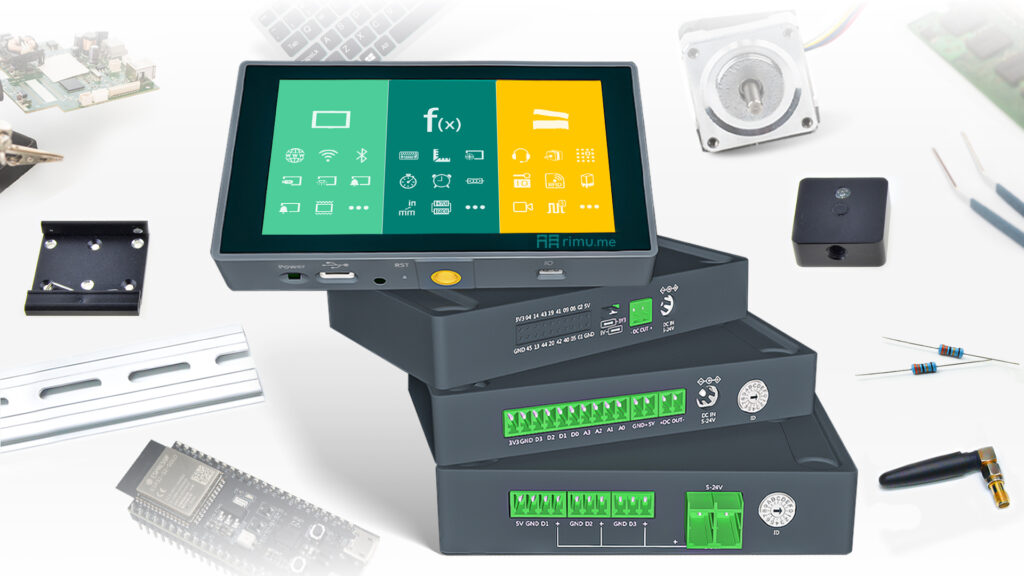
RIMU: Bridging the gap between humans and technology
Design Philosophy
In our increasingly connected world, we often encounter situations where off-the-shelf solutions don’t meet our needs.
Whether it’s automating your home, optimizing your workspace, or creating unique interactive experiences, the need to design and build custom devices arises. Imagine making a device that can easily control the lighting in your home, customized precisely to your preferences. This process requires delving into the intricacies of circuit board design, mastering complex programming languages, and carefully crafting a protective enclosure.
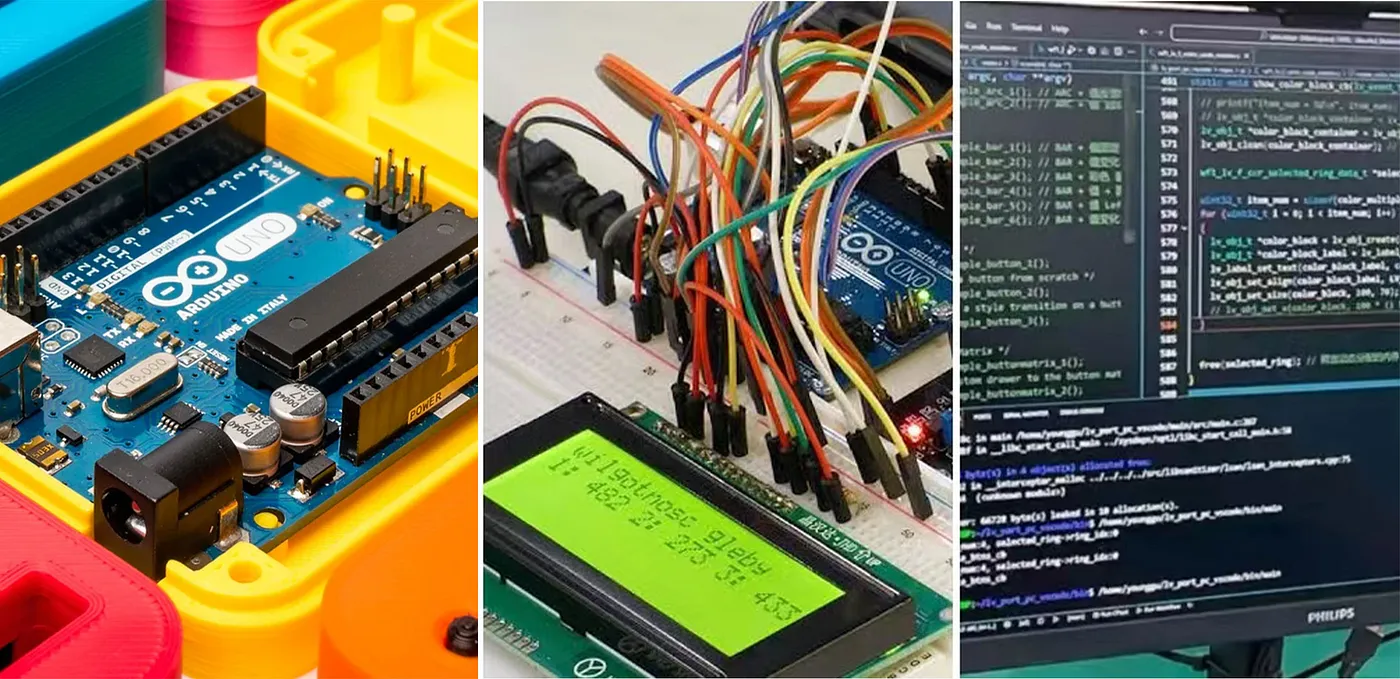
This process is not only time-consuming, but also requires high expertise and technical skills, which is a huge challenge for most non-professionals. Even experienced developers can become frustrated and overwhelmed by repetitive tasks. In addition, there is often a large overlap in technical requirements and solutions, resulting in many people investing time and resources to solve similar problems, resulting in duplication of work.
For the reasons above, we conceived RIMU to help developers and manufacturers realize their creative visions efficiently. RIMU provides integrated, user-friendly solutions that save users time and effort in hardware design, software development, and manufacturing. Our mission is to empower innovators by providing a supportive, integrated platform so that they can focus on their strengths.
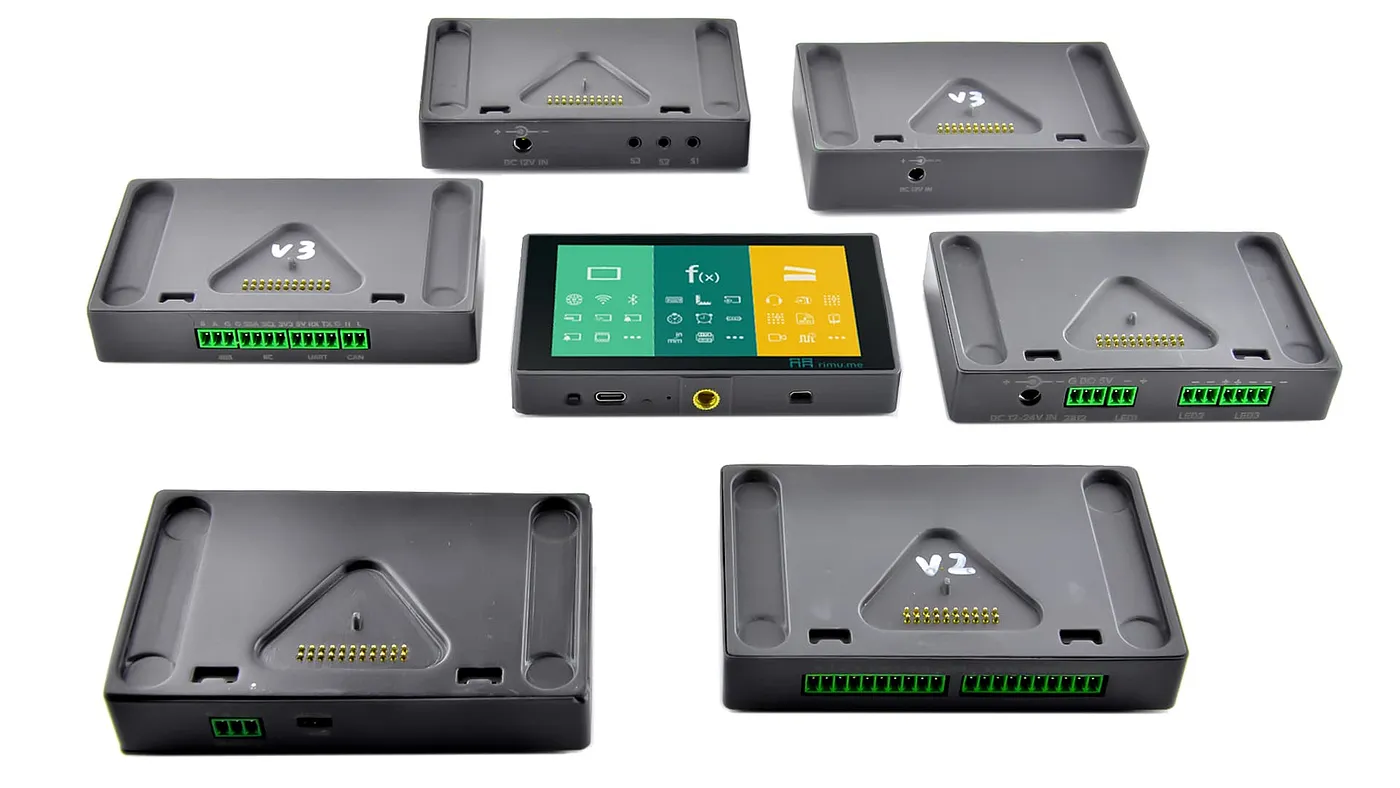
Hardware
Rimu is a versatile device equipped with a powerful ESP32 chip with 384 KB ROM, 512 KB SRAM, 16 KB RTCSRAM and 16 MB PSRAM, 8 GB storage space. Its 4.3-inch TFT touchscreen display offers a vivid 480 x 800 pixel resolution, supports 262K colors, and is driven by an ILI9806 or HX8369 display controller.
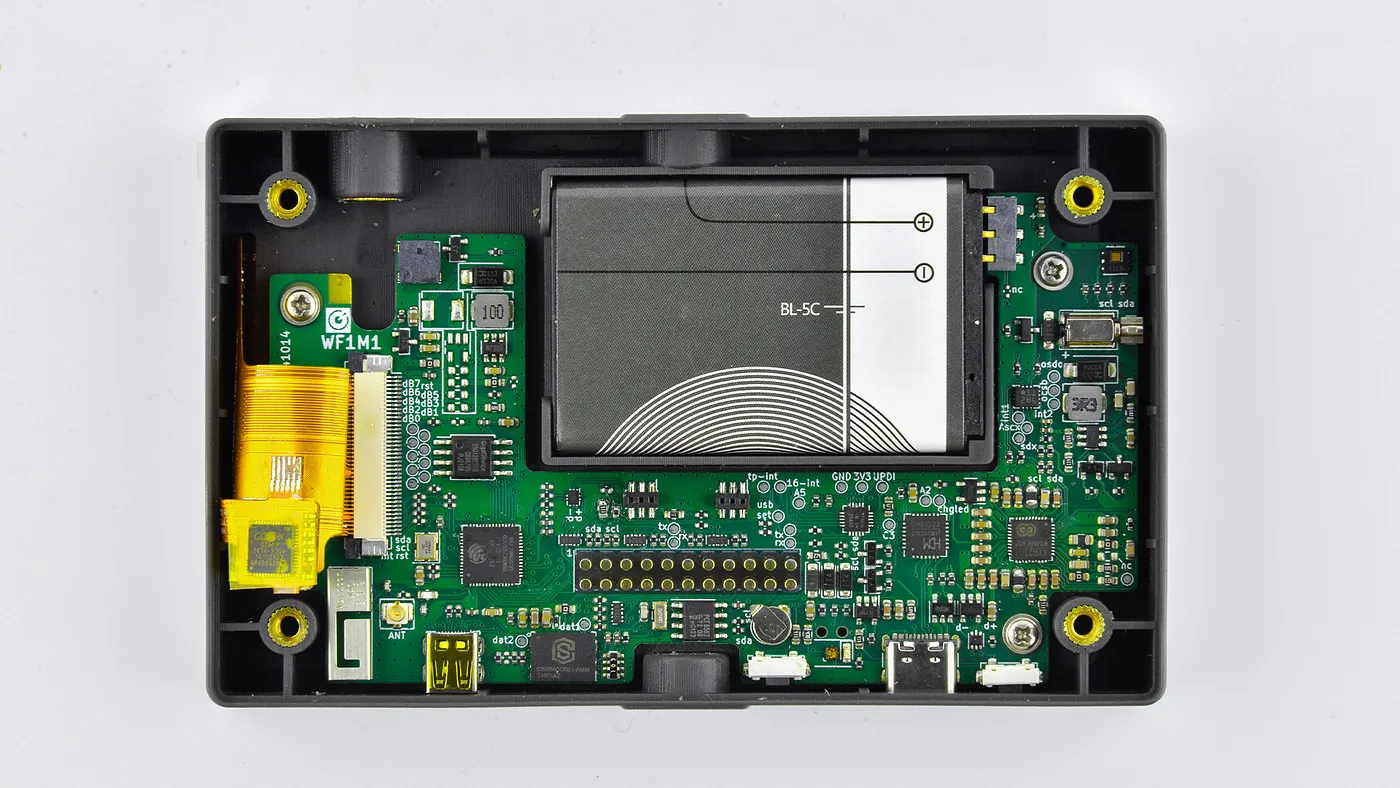
Structure
01. Dimensions Information
RIMU is compact (118 x 73 x 15.9 mm) and features a sleek 4.3-inch screen that provides an impressive resolution of 880 x 480 pixels. With Wi-Fi, Bluetooth, and GPIO pins, it boasts unparalleled expandability to integrate seamlessly with various sensors, actuators, and peripherals.
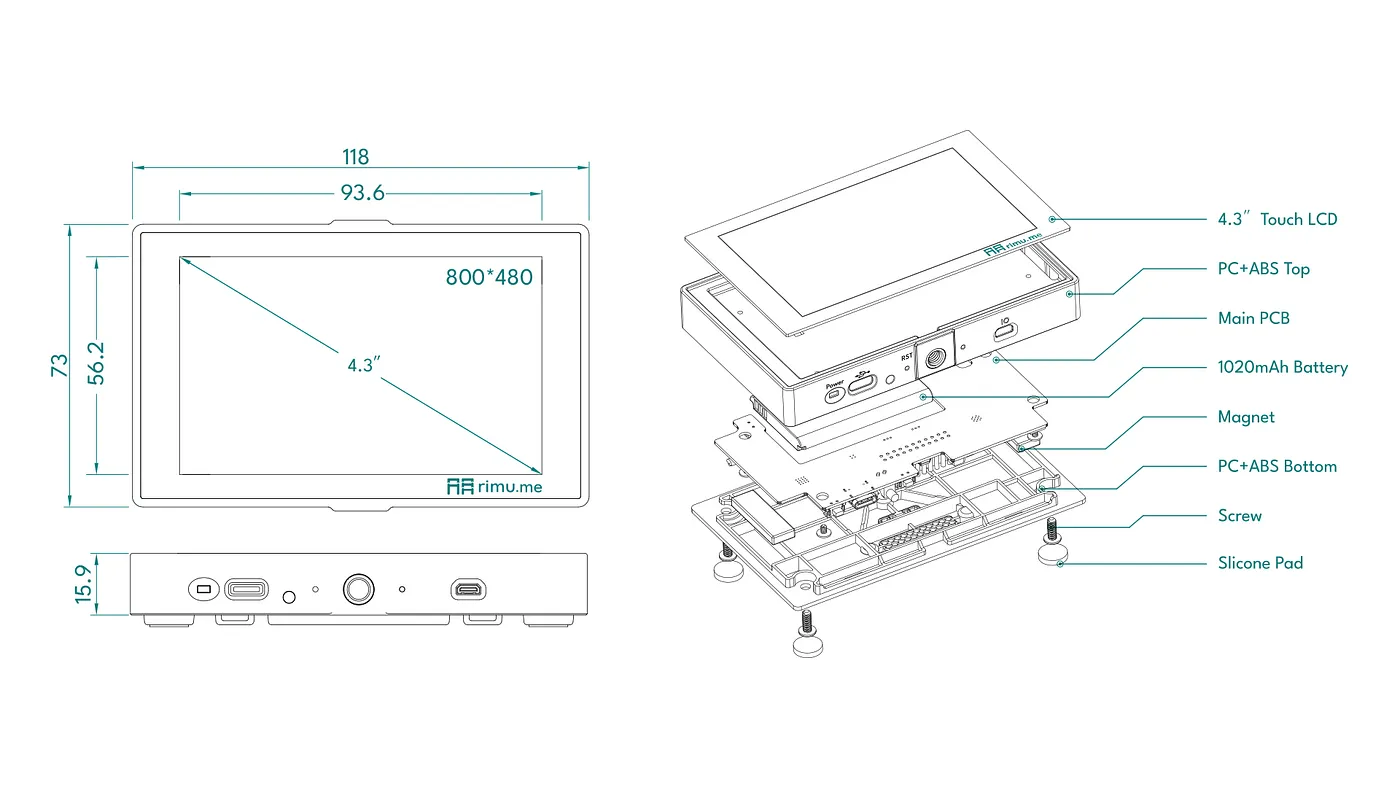
02. Magnetic Suction Structure
Forget traditional screws — RIMU uses an innovative magnetic connection method, allowing you to snap the host and modules together in an instant. The gold-plated pogo pins ensure durability and smooth operation, making it easy for anyone to use without hassle.
03. External Antenna Structure
Our devices offer unmatched flexibility for a variety of environments. Whether you need to enclose it in a metal enclosure or place it away from a wireless access point, we have you covered. A dedicated external antenna interface ensures optimal signal reception, even in challenging conditions . With improved signal quality and extended coverage, you can enjoy a more reliable connection. When not needed, the interface doubles as a lanyard attachment point for easy carrying.
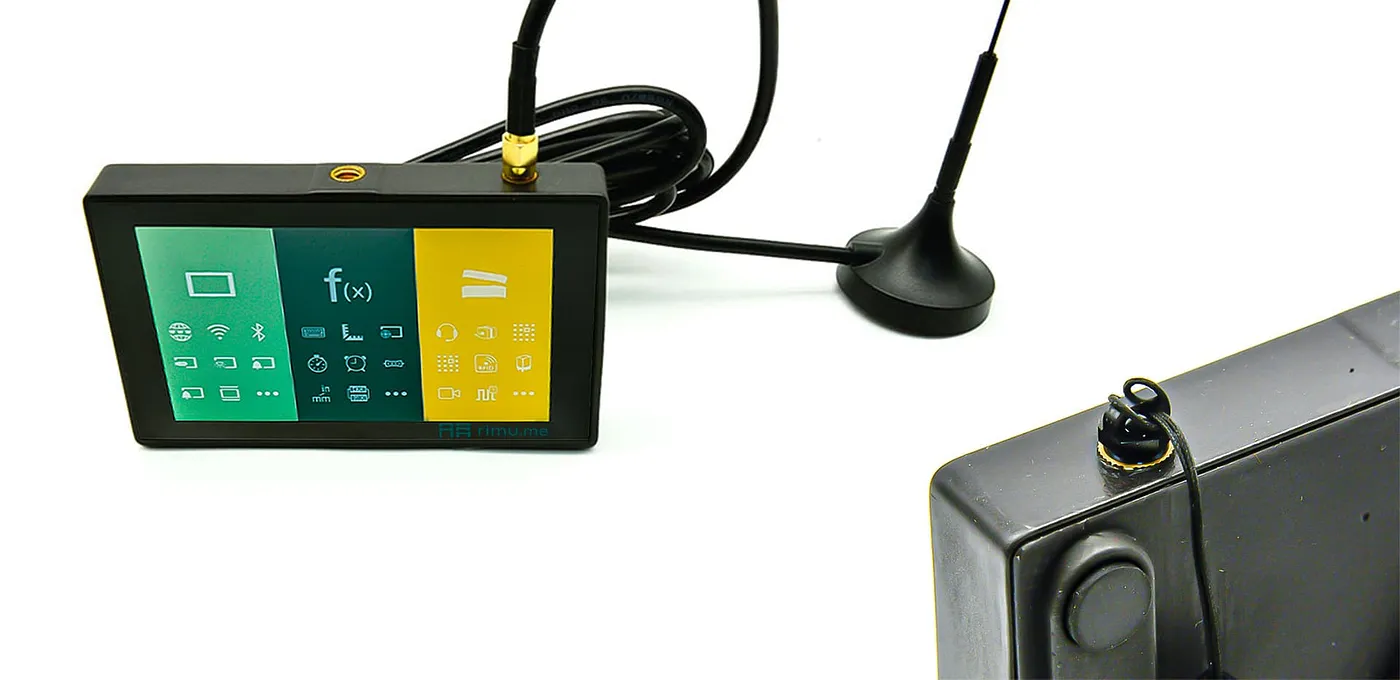
04. Tripod Structure
With specially designed screw holes, RIMU can easily be mounted on a standard tripod, giving it the stability and versatility to tackle complex tasks in industrial automation, scientific research, and education. The tripod offers improved working accuracy and makes RIMU more adaptable than ever.
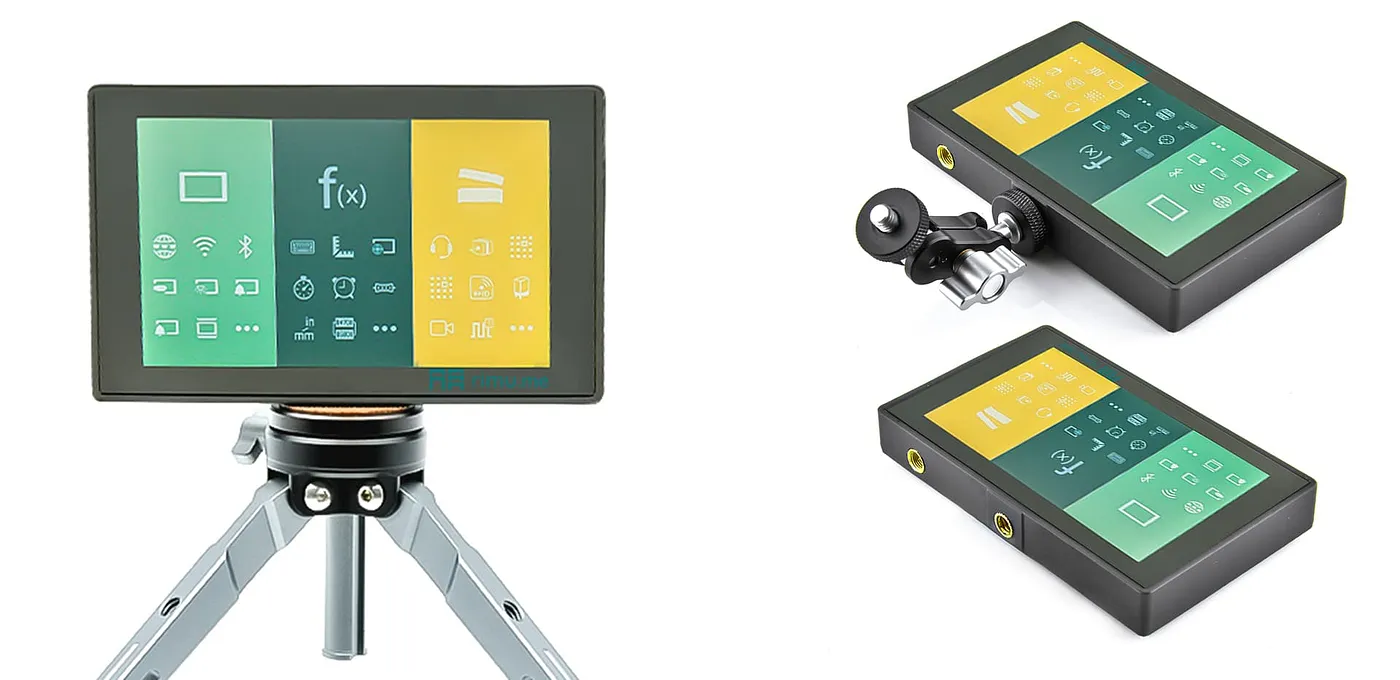
05. DIN35 Structure
Whether it’s for electrical control or automation systems, RIMU supports DIN35 rails, enabling easy connection with sensors, switchboards, and more — perfect for industrial and electrical environments.
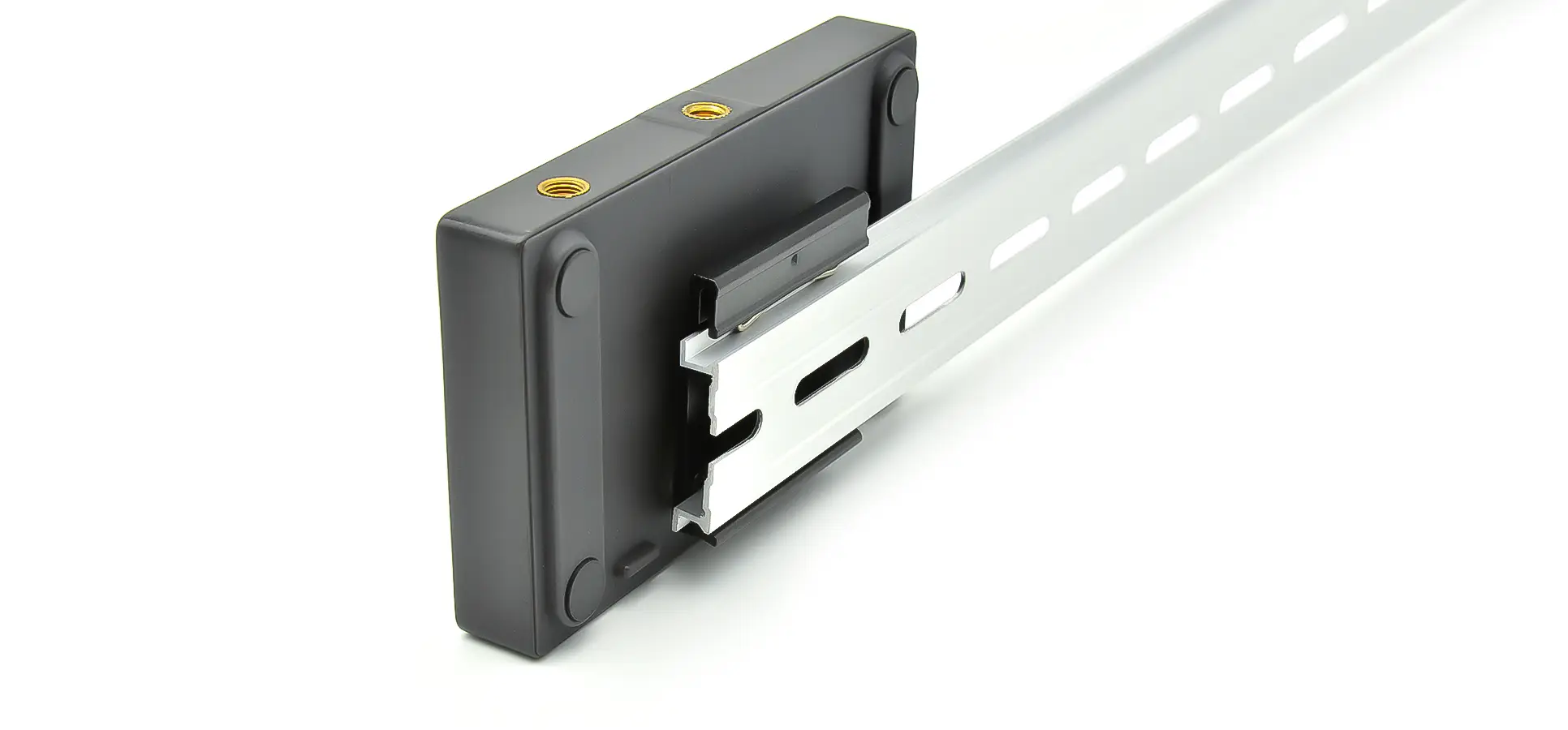
Function
We call the many interesting functions that can be achieved without additional modules as Function. With Rimu’s 4.3-inch touch screen, you can enjoy a personalized experience with features such as calculator, world clock, alarm clock, ruler, unit converter, Bluetooth, etc . We are constantly exploring new features to enhance your daily life.
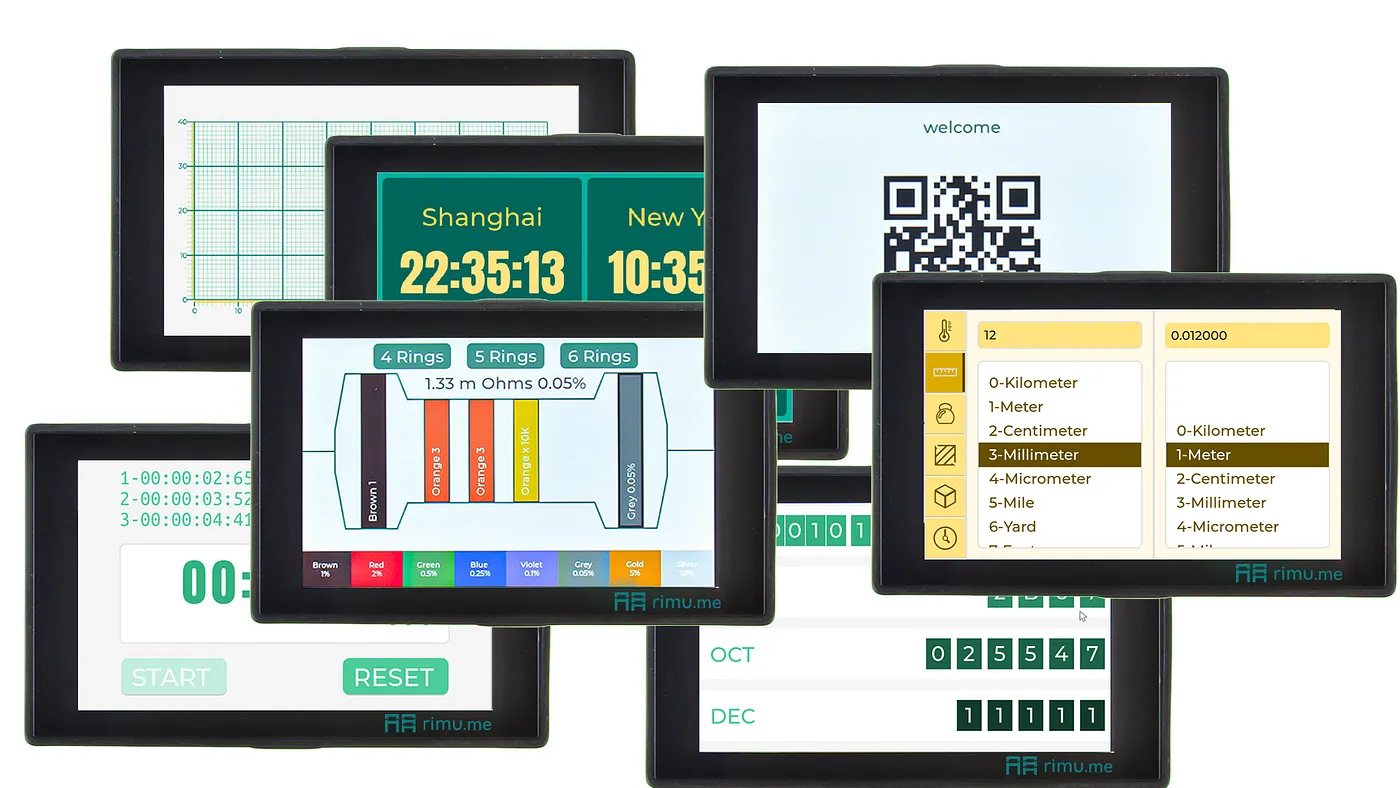
Moudles
RIMU’s modular design reduces hardware costs and promotes sustainability. You only pay for what you need, with no unnecessary extras. This design also makes upgrading, maintaining, and extending the product easy, all while extending its lifecycle and minimizing waste.
We’ve already developed powerful modules, including RFID, DMX512, stepper motors, GPIO, relay, and light matrices, and we’re continuously expanding our library to enhance RIMU’s intelligence and adaptability.
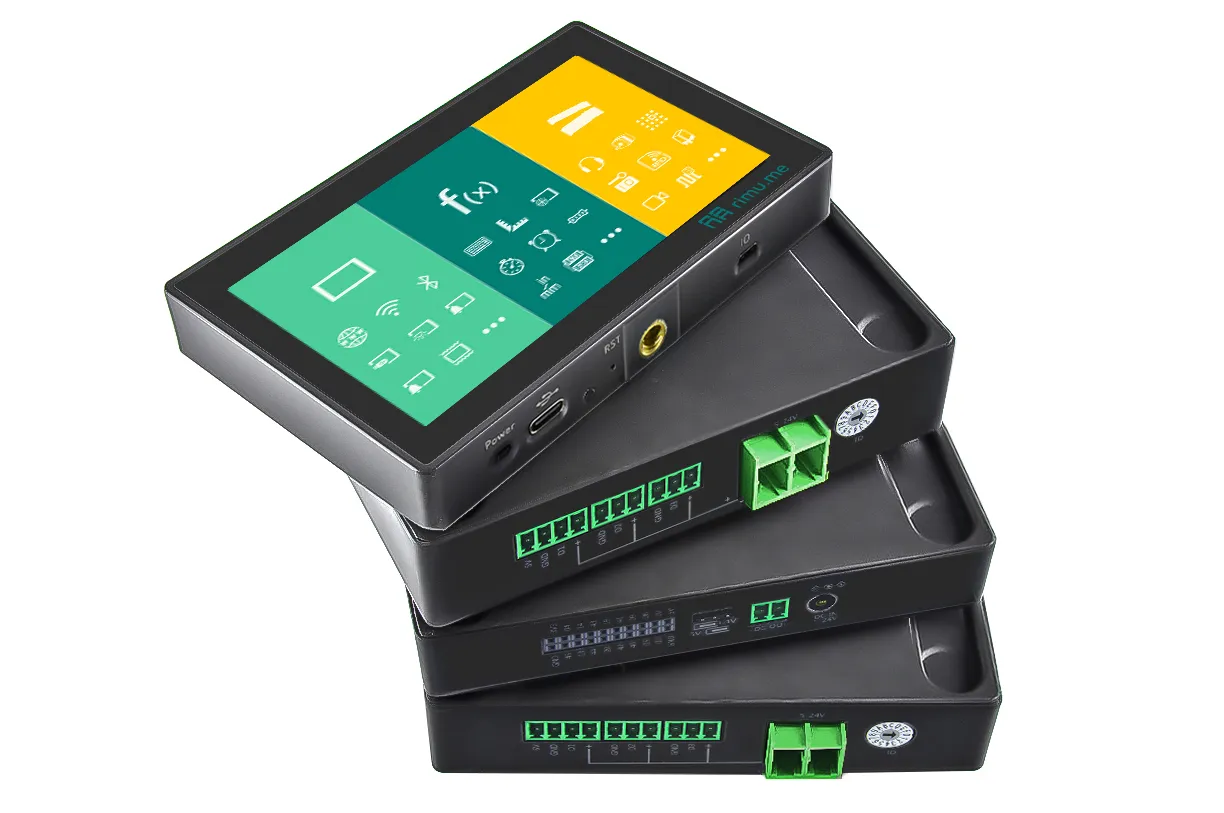
In conclusion
Given that RIMU is a relatively new product, we’ve created this beginner’s guide to help our users better understand its design philosophy. As our inaugural blog post, we’re also sharing it on Medium and Instructables in multiple languages, We also update another article for the keyboard function of RIMU.
If you have any questions, please feel free to leave us a message or join our community for discussion.
